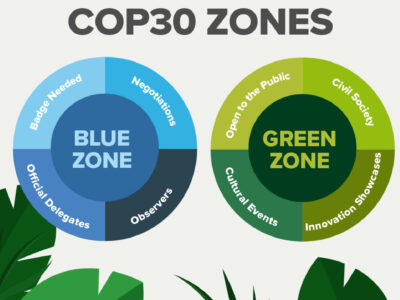
The Earth Institute’s Nirupam Bajpai, Senior Development
Adviser and Director of the South Asia Program at the Center on
Globalization & Sustainable Development, delivered four project
reports on scaling up services in rural India to the Indian political
and civil service leadership, including India’s President,
Prime Minister and Chief Ministers of two Indian states among several
other policy makers.
The reports follow a year of intensive
needs, costs, and delivery assessment by Earth Institute experts
on drinking water, electricity, primary health, and primary education
focusing on two Indian states — Uttar Pradesh and Madhya Pradesh.
The Earth Institute: Why were the states
of Uttar Pradesh and Madhya Pradesh chosen as the focus states
of this two year project?
Nirupam Bajpai: Uttar Pradesh (UP) and Madhya
Pradesh (MP) were selected because they perform poorly in terms
of economic and social development and because collectively, they
account for roughly one-third of the total national population,
of which over 75 percent reside in rural areas. In Year II, we’re
working on Rajasthan. Rajasthan, MP and UP are three of the
largest states in India, located almost in a continuum from the
west to the center and then to the north. MP, Rajasthan and
UP constitute 13 percent, 10 percent and 9 percent respectively
of the country’s total geographical area.
The Earth Institute: What are some of the
essential recommendations of the health and education sector reports?
Nirupam Bajpai: In broad terms, the project reports
address two key questions. One: what will it cost in terms of finances
and human resources to scale-up state-wide access (in UP and MP)
to rural services of safe drinking water, availability of power,
primary health, and primary education? Two: what policy,
institutional and governance reforms may be necessary so as to
ensure proper service delivery?
The reports identify and analyze a comprehensive set of issues
in all the four sectors and lay out specific recommendations for
the consideration of India’s federal government and the two
state governments.
Read
the key recommendations for the health sector
Read
the key recommendations for the education sector
The Earth Institute: Are these recommendations
within the means of India’s government to address?
Nirupam Bajpai: Yes, they certainly are
within the means of the Government. To the extent feasible, we’ve
recommended mobilization of additional funds by cutting unproductive
government expenditures relative to GDP rather than by raising
revenues relative to GDP. In order for effective delivery of social
services, much higher levels of public resources must be invested
in the social sectors, especially in the primary health sector
by the federal and state governments and there needs to be closer
coordination between the federal and the state governments.
For
example, relative to the health sector, the education sector has
not suffered as much for lack of public spending, though there
is certainly room to do much more. In part, this is explained by
the role played by the federal government in the primary education
sector, especially since 1994. With the initiation of schemes,
such as DPEP in 1994 and SSA in 2001, the federal government has
helped make available fairly large sums of money to the state governments.
The lack of federal government’s involvement in the health
sector relative to the education sector may also be due to the
fact that health (public health and sanitation; hospitals and dispensaries)
is in the State list per the Indian Constitution, whereas education
is in the Concurrent list. Items in the State list are exclusively
under the purview of the State Governments. However, the subjects
under the Concurrent list are under both the federal and state
governments.
The Earth Institute: Is there a plan to
implement these recommendations?
Nirupam Bajpai: Well, from
what I’ve learned
after a presentation of these reports and subsequent discussions
with the state governments of UP and MP, they’re working on some
of our key recommendations and plan to utilize them for policy-making
purposes. The state governments also plan to use them for discussions
with the Planning Commission of India for seeking higher levels
of federal support for raising public investment in the health
and education sectors.
The federal government, led by Manmohan
Singh, Prime Minister of India, on the other hand is committed
to raising social sector investments and so I’m confident
that during the next few years and during India’s XI Five-Year-Plan
(2007-12), the states will receive substantially higher federal
funds in the health and education sectors.
The Earth Institute: You have
just completed year one of the two year project “Scaling
Up of Services in Rural India.” What happens in year two?
Nirupam Bajpai: As I said earlier, in Year II,
we’ve recently begun working on the state of Rajasthan. Additionally,
the Indian government has requested the Earth Institute to undertake
similar work in two of India’s southern states Karnataka
and Andhra Pradesh, which we plan to incorporate into this project.
Related News Stories:
7/15/05 — A Meeting with the Honorable Prime
Minister of India Manmohan Singh



